I tried Amazfit's 'posture corrector' true wireless headphones with built-in heart rate sensor – and yes, they are wild
Can running headphones ever replace fitness trackers? The Amazfit PowerBuds Pro sure try

The Amazfit PowerBuds Pro combine the best qualities of running headphones and fitness trackers to offer something completely unique in the true wireless headphones market. For the comparatively low asking price, you get very decent sound quality, adaptive ANC, built-in heart rate sensor and even spine and hearing health protection features – excellent value for money offering if you ask me.
-
+
Built-in heart rate sensor
-
+
Can asses spine posture
-
+
Recommends listening time based on sound levels inside the ear canal
-
+
Sleek design
-
+
Adaptive active noise cancelling
-
-
Hard to get them out of the case
-
-
Hiding the buds' controls in the Zepp app is not ideal
-
-
ANC could be more powerful
Why you can trust T3

Before I embarked on doing this Amazift PowerBuds Pro review, I wasn't sure what to expect from these true wireless headphones. I accidentally stumbled upon them on a product roundup, and the buds immediately piqued my interest; they are supposed to measure and track a bunch of metrics, including heart rate and even head position – not something you'd expect from cheap running headphones.
But I thought, 'Even if half of the claims and features are true, it's worth giving the Amazfit PowerBuds Pro a try', as they can be an excellent addition to our best running headphones guide. At the very least, by testing and reviewing the buds, I'll be able to satisfy my curiosity and move on. Can they knock the Jabra Elite 7 Active off the throne as my go-to workout buds? Are they as tough as the Jabra Vista 2?
There was only one way to find out – by putting them through the wringer. And this is exactly what I did.
Amazfit PowerBuds Pro review – Price and availability
The Amazfit PowerBuds Pro was released in July 2021 and is available to buy now from Amazfit US, Amazfit UK and third-party retailers such as Amazon for a recommended retail price of $149.99/£119.99/AU$299.90.
Currently, the buds sell for $119.99 on the official Amazfit US website, and you can also get them cheaper than RRP via third-party retailers, especially in the US.
Amazfit also has a more sports headphones-looking model called PowerBuds (retailer link), which comes with magnetic ear hooks, and also features in-ear heart rate monitoring. It lacks ANC but has environmental noise cancelling (ENC) that filters out some of the ambient noise during calls.
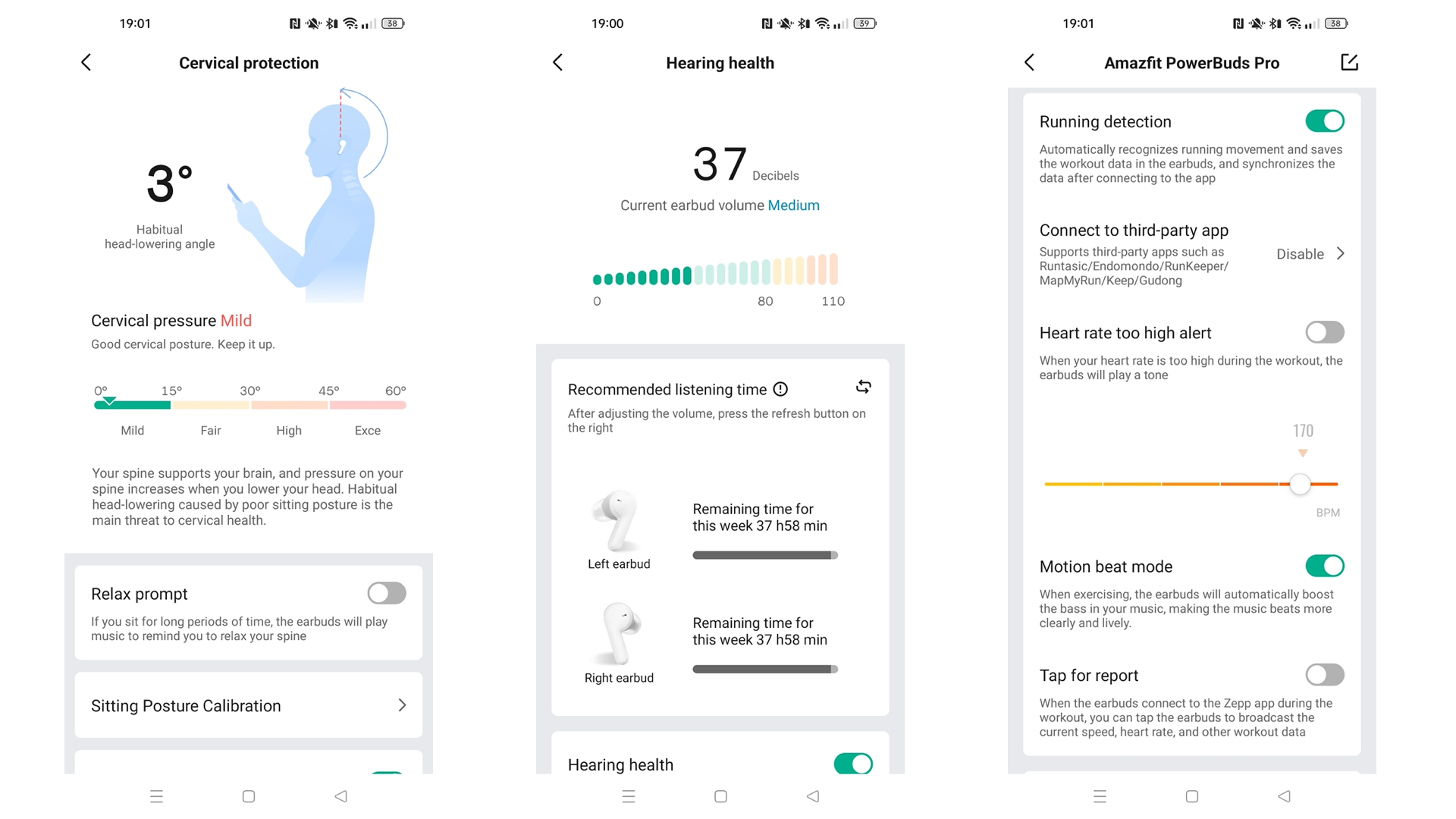
Some screenshots of the Zepp app
Amazfit PowerBuds Pro – Health features
The Amazfit PowerBuds Pro doubles as a fitness tracker, thanks to the built-in PPG optical heart rate sensor in the right earbud. On top of this, both headphones feature three digital microphones, a proximity sensor, an accelerometer and a pressure sensor for more accurate exercise monitoring.
The buds have a 'Running Detection' mode which automatically tracks runs as workouts when this feature is turned on in the Zepp app. During runs, the buds can also automatically boost the bass of the buds via the 'Motion Beat Mode' (more on this in the Sound quality section of the review).
The Amazfit PowerBuds Pro also offers so-called 'Cervical Spine Posture Reminders' – the headphones continuously check your head’s angle and can prompt you to relax your neck when it detects the head to be in a too-steep grade. Not a feature I've seen in any other wearable, let alone headphones, although it makes sense as the buds will tilt with your head, making it easier for them to recognise if you're putting too much pressure on your spine.
Finally, the PowerBuds Pro can recommend weekly listening time based on sound levels in the ear canal via the 'Hearing Health' feature. The buds continuously track sound levels in the ears, which you can check in the Zepp app. Strangely, and despite the headphones being able to measure sound levels in the ears, the PowerBuds Pro don't offer fit recommendations like the Jabra Elite 7 Active or the Beat Fit Pro. Feels like a missed opportunity.
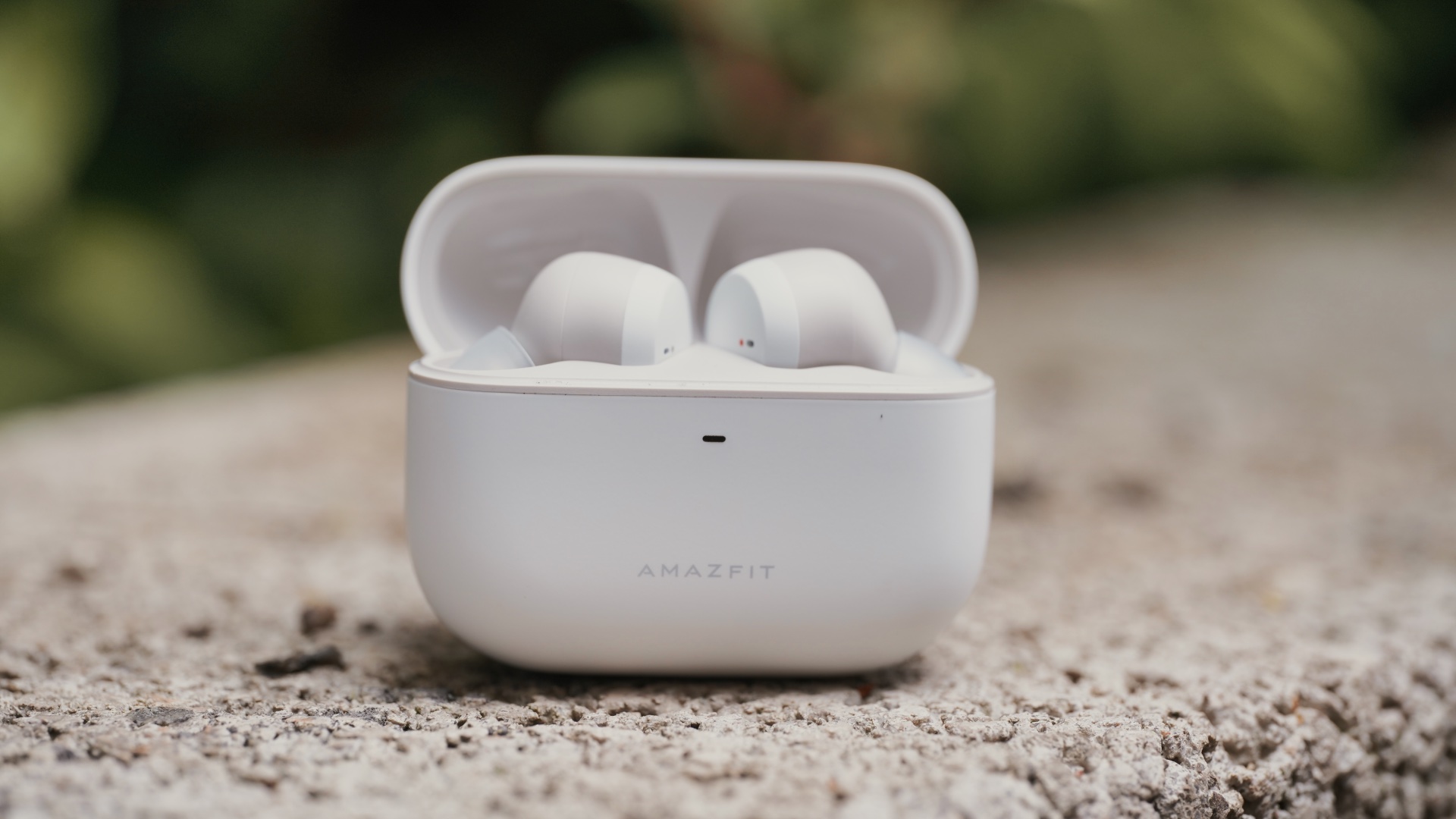
The Amazfit Powerbuds Pro come in a sleek case
Amazfit PowerBuds Pro review – Design and fit
I couldn't help but notice the similarities in design between the Amazfit PowerBuds Pro and the Apple Airpods. You get the same clean, off-white aesthetics, capsule-like charging case, etc. They don't look exactly the same, but Amazfit's designers took a page out of Apple's Human Interface Guidelines book for sure.
Doppelganger-vibes aside, the PowerBuds Pro have a remarkably sturdy build and are IP55 dust and water-rated, which means they are protected against dust and water. They are not swimming headphones, but these true wireless headphones certainly won't get ruined by sweaty workouts.
The Amazfit Powerbuds Pro comes with four sets of ear tips (S-XL). The main unit of the buds is slightly bulky, and due to the arm, it’s harder to find the ‘proper’ running headphones fit. The buds will always travel out of the ears a bit, but not to a level where they actually fall out. They are generally comfortable but fit differently than true wireless in-ear headphones.
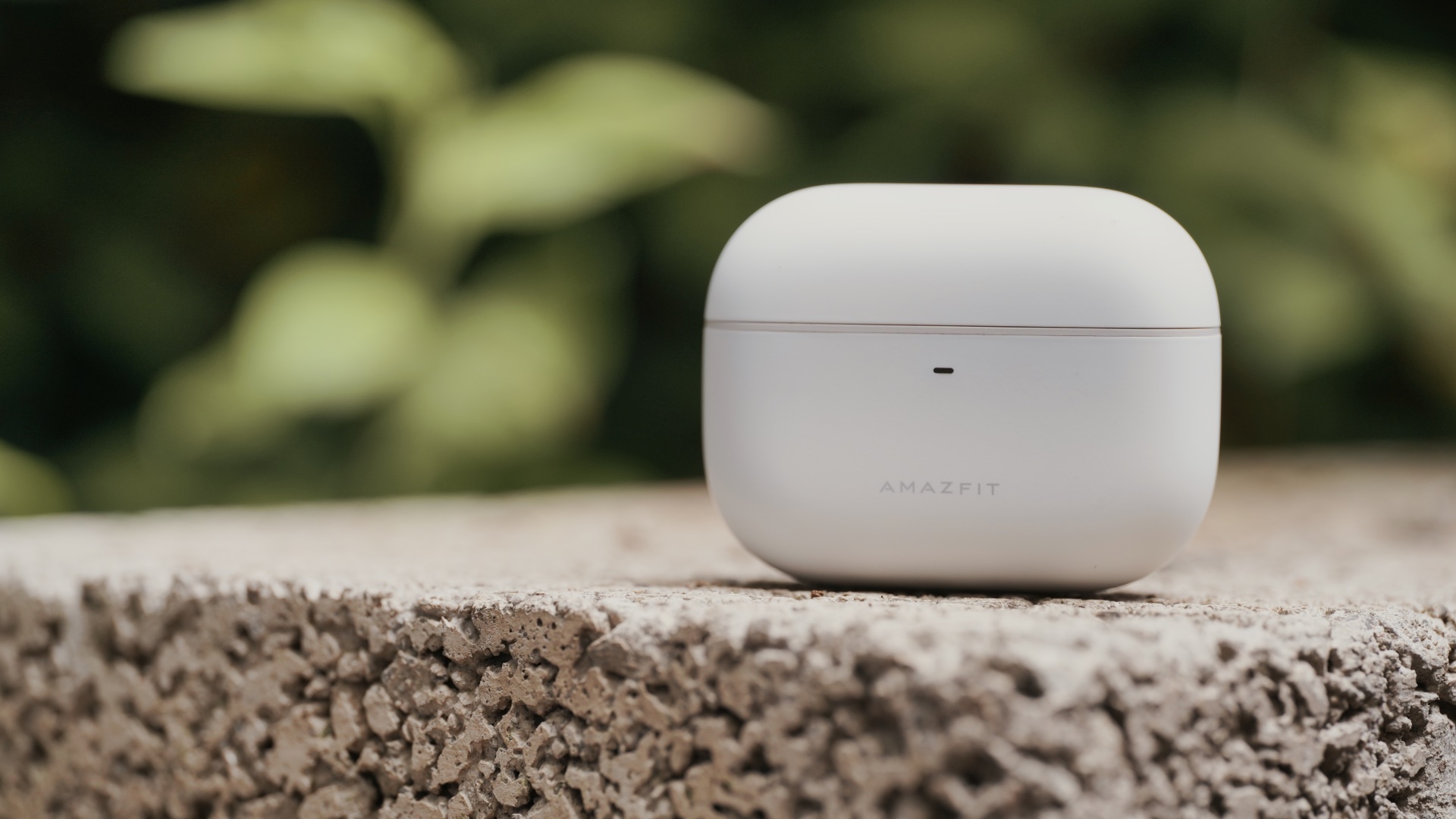
There is plenty of battery power left in the wireless charging case
Amazfit PowerBuds Pro review – Battery life
Battery life is not too shabby; the Amazfit PowerBuds Pro can run for up to 9 hours with the ANC turned off and 5 hours and 45 minutes with the ANC on. There is another 21 hours' worth of charge in the case (or 9h15m if you have the ANC on), which means you can charge the buds twice over without having to tether the case to the wall socket.
The earbuds' continuous call time is up to 3 hours and 30 minutes with ANC on, and you'll definitely need noise cancelling if you conduct calls outside so A) you can hear people and B) they can hear you.
These stats are pretty impressive, in case you're not a workout headphones expert; most premium buds have an 8-hour battery life without ANC, which goes down to 4-5 hours with active noise cancelling activated.
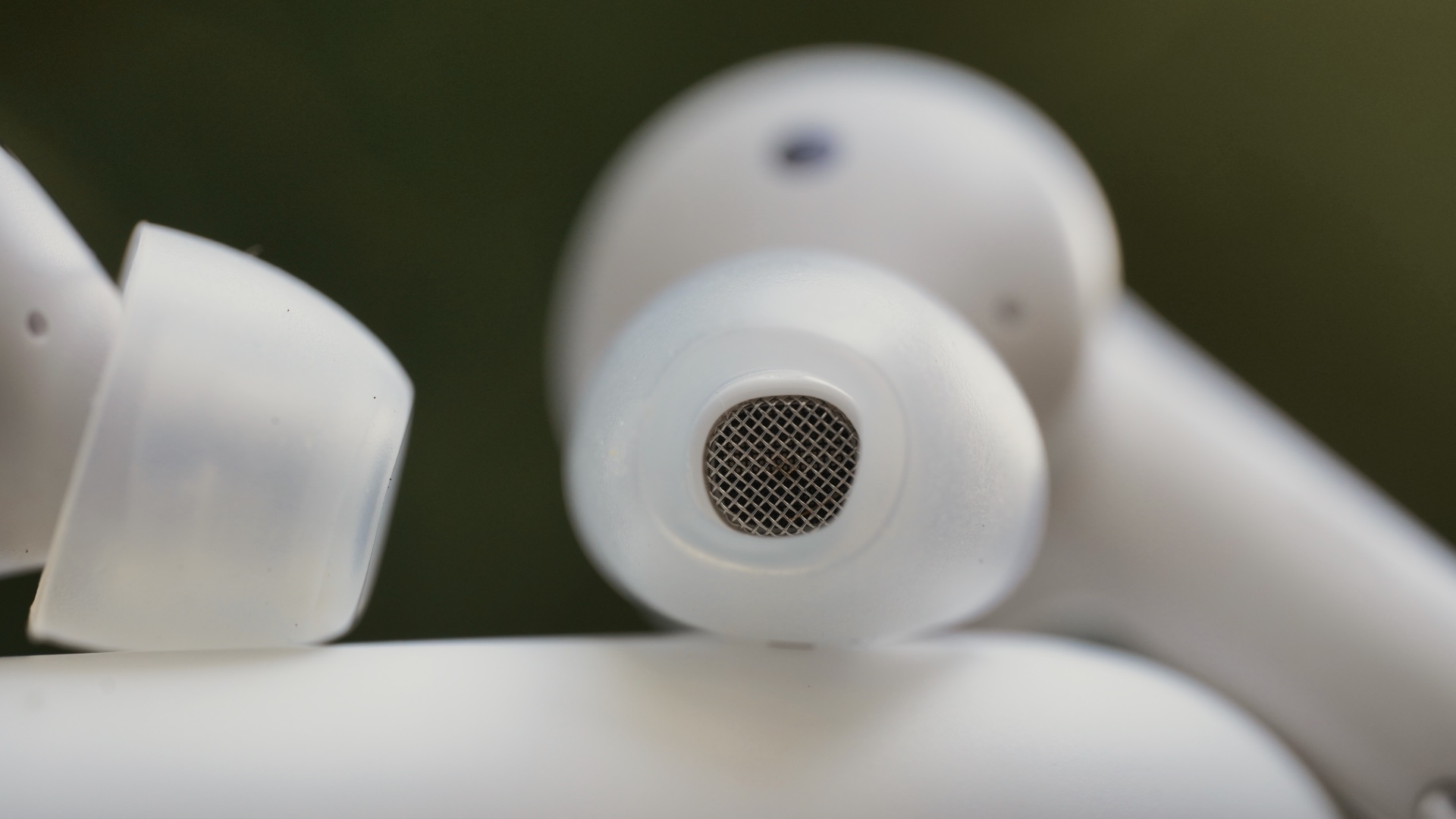
The PowerBuds Pro have a 'dome pattern design'
Amazfit PowerBuds Pro review – Sound quality
The PowerBuds Pro have an 'independent acoustic module, LCP liquid crystal diaphragm, and dome pattern design' that provides 'deeper bass, calmer midrange and clearer treble for superior sound quality', or so Amazfit claims. The good news is that sound is super clear in the buds, no matter what type of music or podcast you throw at it.
What I appreciated the most was how balanced the headphones sounded, not to mention the sound output, which was phenomenal. There are EQ presets in the Zepp app to customise the sound, although I found the ‘flat’ EQ setting to be the best – it balances all sound ranges the most optimally. Occasionally, I also used the 'Blues' setting to emphasise bass and treble.
One way to increase bass is to start running, in which case the PowerBuds Pro activate the Motion Beat Mode that cranks the bass up a notch. This is quite fun and will make the music sound more audible without turning the volume up too high. You can always check the sound levels in the ears in the Hearing Health section of the app.
The PowerBuds Pro offers Adaptive Active Noise Cancellation (Adaptive ANC) up to 40dB. This Adaptive ANC is a combination of hybrid digital adaptive noise-reduction and passive sound insulation technology; in reality, due to the large form factor of the headphones, the buds tend to travel out of the ear slightly, reducing passive noise cancellation and also ANC.
Even worse, the different ANC modes (e.g. Travel, Workout, Indoor) didn’t make any difference to me in heavy traffic. The buds and ANC worked well indoors and for non-vigorous activity, though, and I often found myself reaching for the PowerBuds Pro when I was in the office and wanted to isolate myself from the chit chat around me.
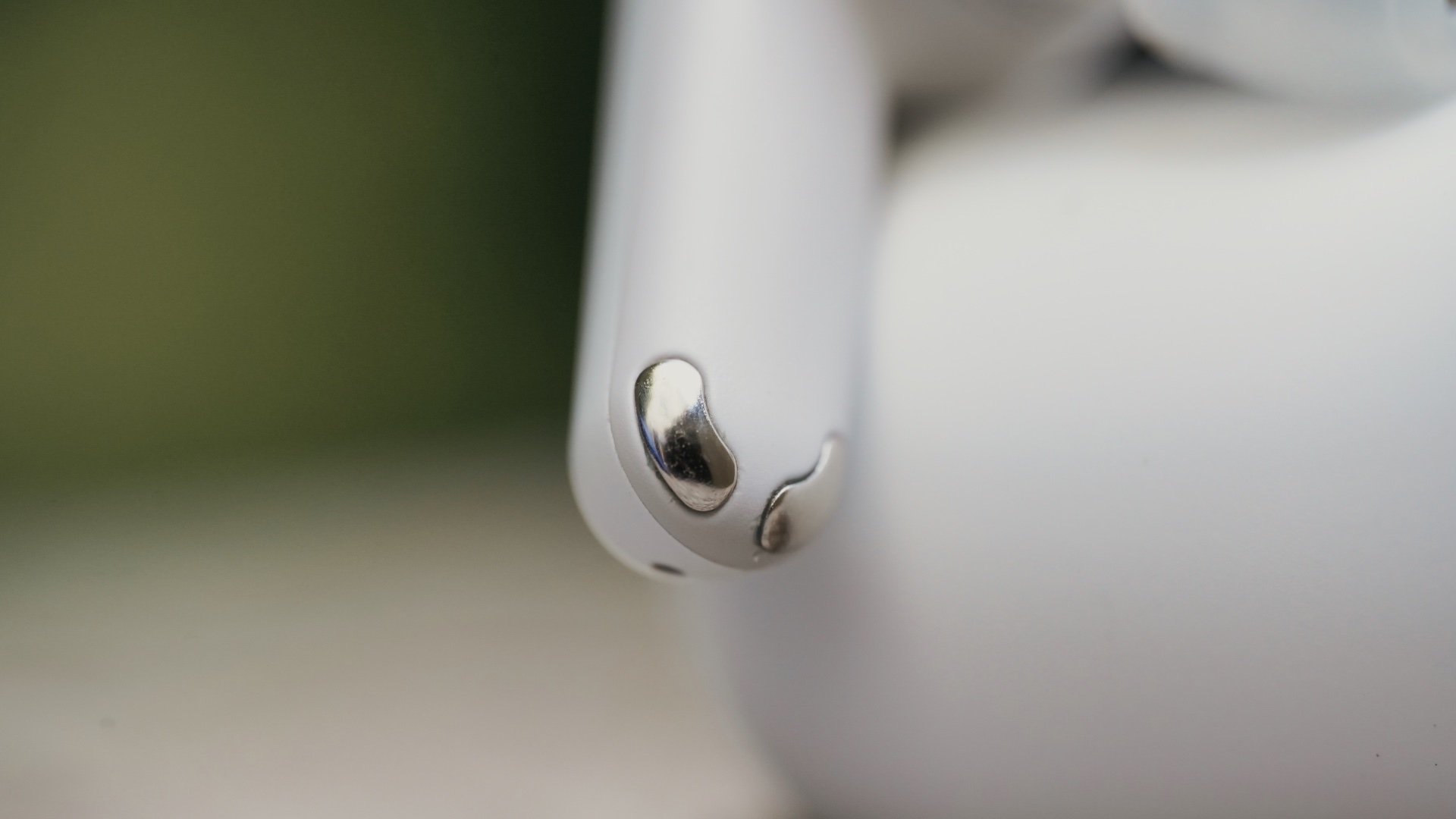
Touch controls are located on the arms of the Powerbuds Pro
Amazfit PowerBuds Pro review – Workout performance
I didn't know what to expect from the Amazfit PowerBuds Pro in terms of running performance, despite their many workout-related features. The headphones I usually use either have an earhook design – like the excellent Beats Powerbeats Pro – or sit in my ears, so I don't have to worry about them dropping on the pavement at the worst possible time.
To my suprise, the PowerBuds Pro sat well in my ears during the testing period. The fit can be adjusted via the application of the different-sized ear gels, and there are four of those included in the box, so you'd think everyone will be able to find the most secure fit. I sure did, by using the largest tips.
The arms do move the buds out of the ears slightly when used for longer, but by then, the gels would have been warmed up, helping the headphones stay in place better. This wiggle does compromise ANC and passive noise cancellation, but thankfully, the PowerBuds Pro crank up the bass and ANC when you're out on a run, so it's not a massive issue.
I hope it goes without saying, but all the extra sound layered on top – e.g. ANC, extra bass, etc. – does make the PowerBuds Pro sound more artificial than your standard audiophile cans. However, these headphones sound pretty good and can perform well under workout conditions; if you want studio quality sound, try wired over-ear headphones instead.
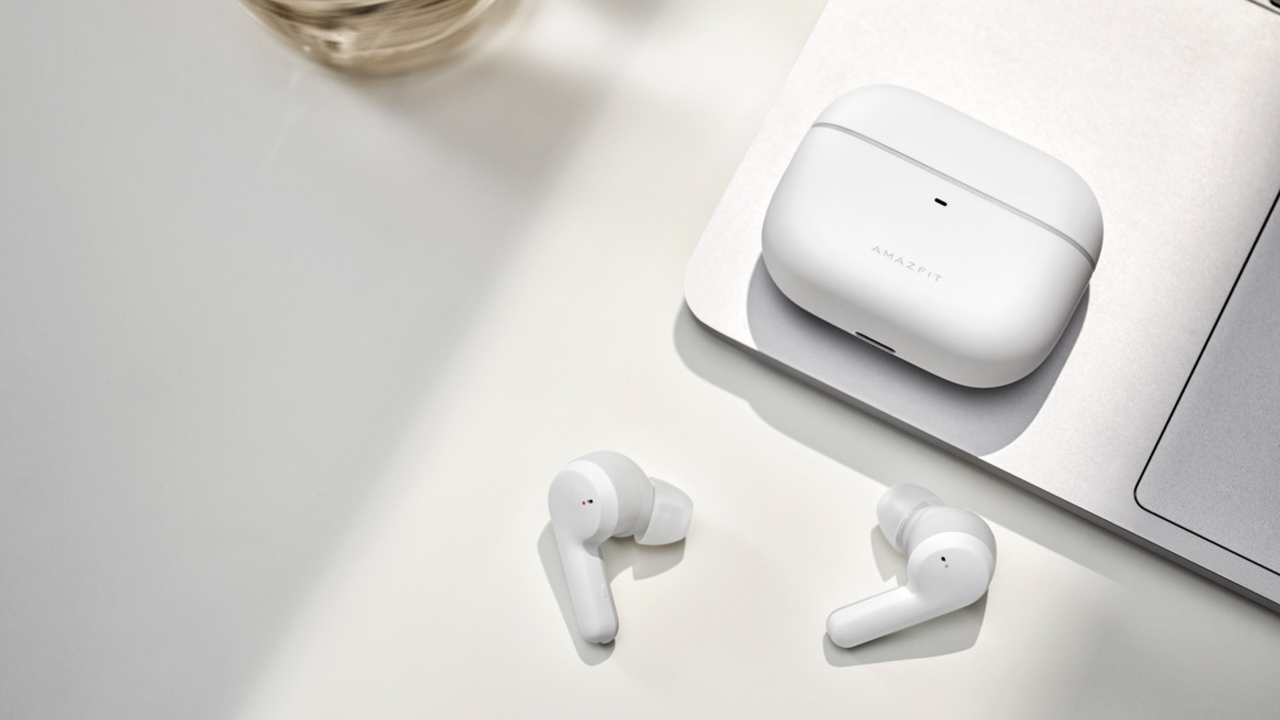
Amazfit PowerBuds Pro review – Verdict
The Amazfit PowerBuds Pro headphones punch above their weight and offer many exciting health and wellness features in a sleek, attractive package.
These features include passive and adaptive active noise cancelling, built-in heart rate sensor and automatic run detection, spine and ear health checks and more. Not all these features are the most accurate – I won't trade my Fitbit Charge 5 in for these buds for tracking sleep – but as part of a package offer, all the extra modes make the PowerBuds Pro great value for money true wireless headphones for exercise.
I wish the buds helped me find the perfect fit, which is a strange feature exclusion considering the PowerBuds Pro monitor sound levels in the ears already. That said, if you can work out which ear gel fits your ears best, you'll be rewarded with excellent sound performance both on and off the running track (or gym), especially if you like punchy, bassy sound.
I'd recommend the Amazfit PowerBuds Pro to people who like premium true wireless headphones – both in terms of sound and looks – and want to use said earbuds for occasional running and exercise (so not hardcore training). They'll definitely be my choice for music listening in the office.
Amazfit PowerBuds Pro review – Also consider
The Apple AirPods Pro might be twice the price of the PowerBuds Pro, but these are some excellent wireless earbuds for iPhone owners. They sound great, the noise cancellation is strong, and the secure yet comfortable fit also works well for exercise. They might be beaten in certain areas by newer buds, but they're an excellent package, especially with money off.
For something more stylish, look no further than the Bang & Olufsen Beoplay EX. They might carry a rather hefty price tag, but the Beoplay EX have superbly-balanced sound, is completely waterproof (IP57 rating) and have similar ANC performance to the PowerBuds Pro.
Sign up to the T3 newsletter for smarter living straight to your inbox
Get all the latest news, reviews, deals and buying guides on gorgeous tech, home and active products from the T3 experts

Matt Kollat is a journalist and content creator who works for T3.com and its magazine counterpart as an Active Editor. His areas of expertise include wearables, drones, fitness equipment, nutrition and outdoor gear. He joined T3 in 2019. His byline appears in several publications, including Techradar and Fit&Well, and more. Matt also collaborated with other content creators (e.g. Garage Gym Reviews) and judged many awards, such as the European Specialist Sports Nutrition Alliance's ESSNawards. When he isn't working out, running or cycling, you'll find him roaming the countryside and trying out new podcasting and content creation equipment.
-
 Polar’s new subscription feature lands in the shadow of Garmin’s Connect+ rollout
Polar’s new subscription feature lands in the shadow of Garmin’s Connect+ rolloutPR genius or timing disaster? Polar’s new Fitness Programme adds adaptive training to its ecosystem
By Matt Kollat Published
-
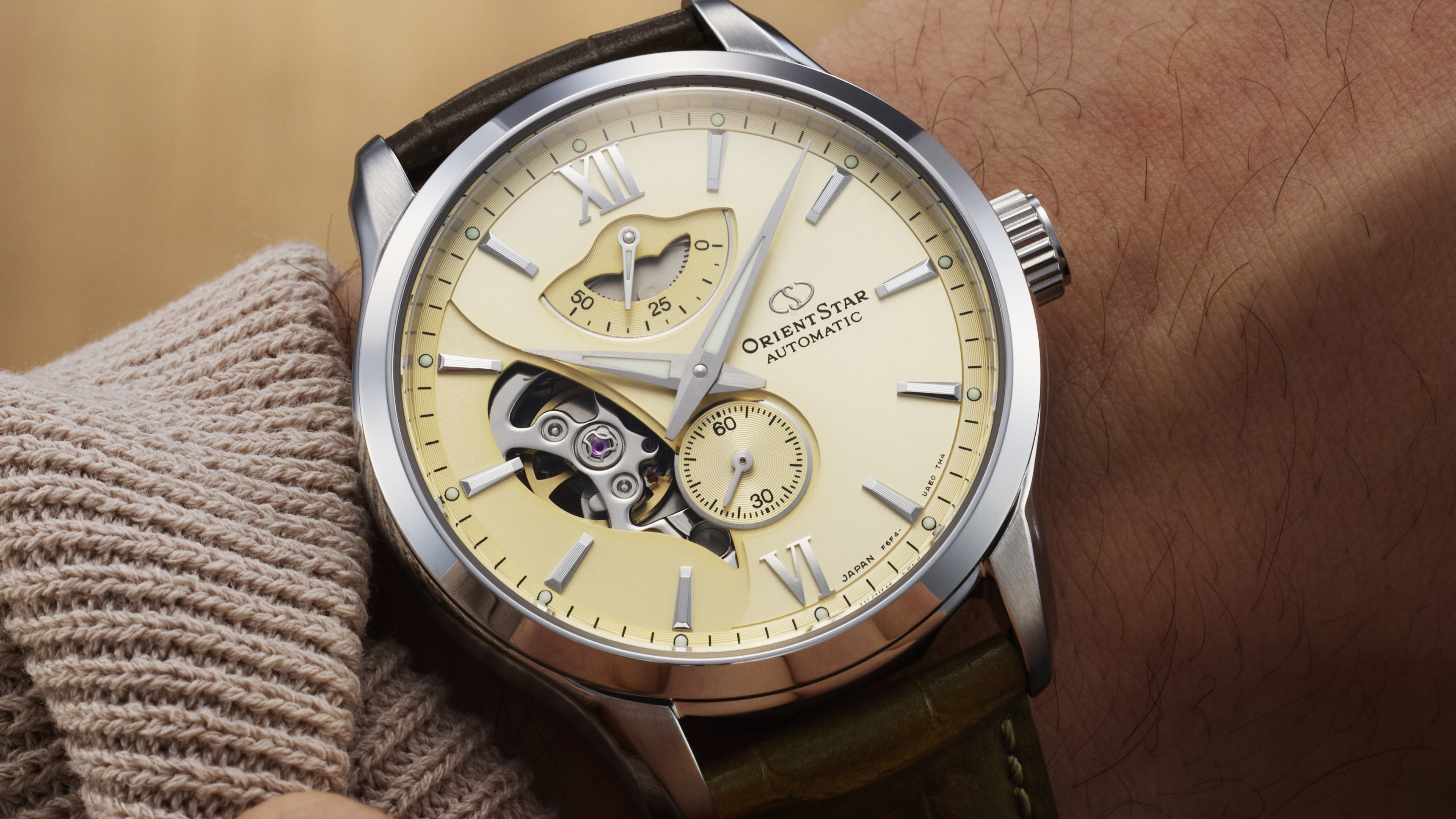 New Orient Star watches offer a glimpse of the magic within
New Orient Star watches offer a glimpse of the magic withinThere are two new skeleton pieces
By Sam Cross Published
-
 Netflix's most surprising 100%-rated sci-fi series returns with gorgeous trailer
Netflix's most surprising 100%-rated sci-fi series returns with gorgeous trailerLove Death + Robots is back for more
By Max Freeman-Mills Published